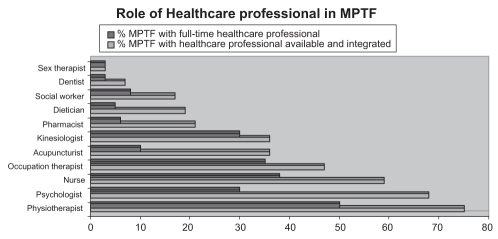Abstract
Fear-avoidance models of musculoskeletal pain posit individual differences in fear of pain responding along a continuum of confrontation and avoidance (Asmundson et al., 2004). Individuals who confront their pain are believed more likely to adaptively resume physical and social activities, experiencing only minimal psychological or physiological complications. Conversely, those who engage in fear-related pain avoidance behaviors are expected to exhibit psychological and physical consequences, increased pain perception, and disability. It is reasonable to expect that multidisciplinary treatment resulting in reduced fear of pain will produce corresponding reductions in pain and disability (de Jong et al., 2005). There are few prospective studies that evaluate this hypothesis (Sieben et al., 2005). The purpose of the present study was to longitudinally assess patients with chronic musculoskeletal pain over the course of a six week tertiary treatment program. Thirty individuals (23% women; M age = 44.5, SD= 10.7) enrolled in a government sponsored multidisciplinary rehabilitation program were assessed at intake, three weeks, and six weeks. Participants completed the McGill Pain Questionnaire, the Pain Anxiety Symptoms Scale-20, and were assessed with an objective measure of functional ability. Repeated measures analysis of variance revealed several significant linear effects: increases in reported pain intensity, F(1,27)=4.81, p<.05, eta2=.18; reductions in fear of pain, F(1,24)=8.27, p<.01, eta2=.35; and reductions in functional deficit, F(1,28)=20.57, p<.01, eta2=.74. These findings suggest that over the course of multidisciplinary treatment, although reported pain intensity increased, both reported fear of pain and functional deficit decreased. Implications and future research directions are discussed.



